
Who Were
The Cambs
The Cambs
at War
1/1st Btn 1914-1919
1914 - 1/1st Overview
1915 - 1/1st Overview
1915 - St Eloi
1915 - Fosse Wood
1916 - 1/1st Overview
1916 - The Schwaben
1916 - St Pierre Divion
1917 - 1/1st Overview
1917 - St Julien
Insignia, Medals & Books
Remembering The Cambs
Biographies
About Us &
This Site
The Regiment's Greatest Hero - The Story of CSM Harry Betts MC DCM and Bar
One hundred years ago, in September 1919, the grieving mother of a brave soldier clutched her son’s gallantry award in her hand, but this was no ordinary ceremony. Hanging on its red and blue ribbon, the gleaming silver Distinguished Conduct Medal, came complete with a Bar to indicate it had been awarded a second time. Only two soldiers in the Cambridgeshire Regiment earned that honour twice.
More was to follow when some months later, with mixed emotions his parents received a small box containing a silver Military Cross on its purple and white ribbon. It was recognition of the gallantry that resulted in him being recommended for the nation’s highest military honour, the Victoria Cross.
Receiving the medals, no doubt with a mixture of emotion, were James and Alice Betts, the parents of Harry Betts, who is lauded as the bravest soldier to serve with the Cambridgeshire Regiment in World War One. Not only had this outstanding solider, aged only 22 when he was killed in the final campaign of the conflict, been recommended for numerous acts of heroism, but he was thought to be the youngster soldier, at 21, to be appointed a Company Sergeant Major in the British Army. His career with the Regiment, beginning when it first went to the Western Front in 1915 and cruelly ended as the Allies began their advance to victory in the summer of 1918, contained numerous acts of bravery. In the annals of the Regiment, he is a legend. An overused word in modern society, it is a true reflection of this Fenland hero.
Harry’s three honours are unique to the Battalion, with the only other man in the Cambridgeshires to earn the DCM and Bar also gaining a third award, a Military Medal. The amazing story of Harry Betts has received some coverage in local newspapers in Cambridgeshire during the last 30 years, but now we can add so much more.
Early Life - 1896 to August 1914
Born in 1896, Harry was the son of James Betts and his wife Sarah Alice Betts, known as Alice. His parents, the children of agricultural labourers, had both spent their early years in March, Cambridgeshire, and appear as domestic servants at houses in March during the 1881 census and were married in 1888.
It was a time when the railways were expanding throughout England and by 1891 James and Alice and an eight-month-old son William, were living at Mill Green, Warboys, where James had secured a job as a railway porter at Warboys Station, which had opened in 1889. Harry, along with two sisters and another brother, was born when his parents were living at Warboys. By 1897, this station was part of the Great Northern & Great Eastern Joint Railway, which was to play a major part in the family’s future.
Next, James secured a job with the same railway company at Stow Park, near Gainsborough, Lincolnshire, where another son was born in 1900, but soon the family moved to the Railway Cottages in Green Lane, Misterton, again near Gainsborough, where James Betts was listed as a railway signalman in the 1901 census. Two more sisters and a brother were born between 1902 and 1906. Between 1906 and 1911, the family had moved again, this time the parents returning to March, where James became a railway porter, living at Twenty Foot Siding, on the outskirts of March, but within the parish of Coldham. Harry was now 14, and a having left school had taken a job as a farm wagoner.
The substantial railway house still exists, where next door lived signalman Ernest Haxley, his wife, daughter and two sons. The Siding is on the Rings End side of the Twenty Foot River, on what was the railway line from Spalding to March, was opened in 1867 with the signal box opened in 1882. The siding served the local agricultural industry – moving produce from farms and goods nearer to the isolated farms. Wagons arrived from farms with produce to be loaded on to rolling stock, so perhaps Harry carted goods to the siding.
At some stage after moving to Twenty Foot Siding, Harry met a girl called Mabel Ellen Terrington, who lived in nearby Rings End, near the Toll House on South Bank. Her father had been a platelayer for the GNER, but in 1911, when Mabel was 12, he was an agricultural labourer. It is thought that on leaving school at 14, she became a domestic servant in the nearby village of Elm. Mabel was to eventually become Harry’s fiancé.
Enlistment - August 1914 to February 1915
After war was declared in August 1914, men enlisted in large numbers in the armed forces, including in local regiments. In early September 1914 Harry, along with many men from March and the surrounding villages, signed up to join the local Cambridgeshire Regiment. On September 10th, along with other local men, Harry took the train from March station to Cambridge, where he was joined by hundreds of new recruits to the Cambridgeshires. He was given the regimental number, 2484, and placed in the March and District Squad of recruits. These early recruits were used to replace pre-war men of the 1st Battalion who did not sign the Imperial Service obligation. The March squad men may have expected to join their friends in G (March) Company, but some, like Harry, ended up bringing one of the Cambridge companies up to full strength during the period between his enlistment to February 1915, when the Battalion was sent to the Western Front. By now the Battalion had been designated 1/1st Battalion, Cambridgeshire Regiment, with a 2/1st Battalion made up of men who had not volunteered for overseas service also bought up to strength by new recruits. The latter battalion would supply reinforcements to the 1/1st Battalion when required.
In January 1915, the eight-company system used by the Territorials was replaced with the four-company system. Harry found himself in B Company, formerly the old C and D Companies, recruited from the Cambridge area. Each company, now containing about 220 other ranks, consisted of four platoons – with B Company, commanded by Major Edward Saint with Captain Oswold Tebbutt as 2ic, containing No 5, 6, 7 and 8 Platoons, each with four consecutively numbered sections. Harry was in No 6 Platoon, 5 Section, initially under Lt Victor Mallet, with the Platoon Sergeant being Sgt Herbert Pull. Harry’s section commander was Cpl Bertie Balls, with the L/Cpl being George Doggett.
The other men in Harry’s section were Henry Ayres, Len Benton, Richard Deck, Royce Barnes, Les Naylor, George Arber, Fred Bradford, Alf Adams and Jack Dant. They were mainly from Cambridge, with Benton and Adams being from Ely.
The Western Front - February to April 1915
Harry kept a pocket diary and made notes about his time on the Western Front between February 1915 and April 1916, many of the entries quite mundane, a sentence or a few words, although there are some more detailed accounts.
His entry for February 14th 1914 stated: Left Bury St Edmunds for Southampton, arrived Southampton about 4pm, left Southampton for France at 7pm.
Arriving at Le Harve on February 15th, the Battalion marched to a camp on the cliffs and the following day he noted: Issued with fur coats and trench gloves. On February 18th the Battalion was taken by train to Cassel and then billeted in barns at Terdeghem. At the end of February, the men marched to Boeschepe and were again billeted in barns. Soon they would be joining the 27th Division to gain front line experience. The 27th was formed, using Regular Army battalions returning from the Empire, at the end of 1914. It consisted of three brigades, 80th, 81st and 82nd. The Cambridgeshires would be in 82nd Brigade, alongside the 1st Royal Irish Regiment, 2nd Duke of Cornwall’s Light Infantry, 2nd Royal Irish Fusiliers and 1st Leinsters.
The following day, March 1st, B Company received orders to go into the trenches to gain experience. The men were excited at the prospect and the following day marched four miles to Dickebusche, near Ypres, and were billeted in tents, alongside the Princess Patricia’s Canadian Light Infantry.
The evenings of March 3rd and 4th were spent trench digging in front of the British support trenches, before marching three miles back to their tents. On March 4th, Harry recorded: Our first casualty, Pte Northfield being hit in the arm. The following day, he wrote: Trench digging, same place 7 to 12pm. Corp Dewey wounded, died (March 4th) in Dickebushe Church, being used for a hospital. The following day B Company marched to billets in Reninghelst, before returning to Boeschepe on March 7th. Here, no doubt, the men of B Company were keen to tell their comrades in the rest of the Battalion about their experiences.
Such was Harry’s first experience of the Western Front, but soon he would be in the thick of the action. On March 13th, B Company marched to Voormezeele, where they slept in the cellars of the ruined houses, located about one mile from the front line.
Harry’s account of the next two days is more detailed. March 14th: About 4.30pm prepared to get ready for 24 hours in the trenches. About 5 o’clock the Germans broke through our first line at St Eloi, the nearest trenches to us and started bombarding the village we were in. We were ordered to throw all packs off and advance to the British lines with fixed bayonets. We advanced to the reserve lines where our troops were forced back. The enemy were continually bombarding our reinforcements for about 16 hours.
March 15th: About 3am Major Saint led about 25 of us into the village of St Eloi, where the Germans were advancing on in close formation. We got the furniture of the house and barricaded the road and had to retire, our Major getting recommended for the same! At the same time there was a great call in England for more shells and recruiting was done in the Shire. Arrived in Dickebushe about 7am, was packed into a big house.
He added: During this our first engagement we lost one of our most respected, Captain of B Company, Capt Tebbutt, son of our late Colonel of the Cambs. Went digging trenches just behind our original front line, that we had returned to. Some went to find our packs at Voormezeele but found most of them had been looted. No food.
Further details about the Cambs and the fighting at St Eloi can be found by clicking here.
The Second Battle of Ypres - April to May 1915
His diary returns to single sentence entries until April 2nd when he records the battalion leaving billets at Westoutre at 3am and arriving in the famous hub of the fighting, Ypres, at 11am where they stayed in old cells of the prison. Soon the 2nd Battle of Ypres would begin and with it the first use by the Germans of poison gas. After dark B Company started out for the front line, in heavy rain, relieving French troops in what the British had called Shrewsbury Forest. After two days B Company moved back to Sanctuary Wood, where for several days they engaged in fatigue work, including taking rations to A Company. By now Harry’s platoon officer was Lt Eric Hopkinson
The remainder of April followed a similar routine in and out of the front and support lines, with Harry reporting the wounding of B Company’s Cpl Arthur Skeel (B Coy 3 Platoon) and a minor wound to No 5 Platoon’s Sgt, Harry Clarke. The men were being subjected to artillery shelling, trench mortar fire and very accurate sniping by the Germans. On April 25th, he wrote about a slight injury: Slight wound in trigger finger, the same bullet hitting a locket on my mate’s chest. Sniping. Soon he was reporting the death of Cpl Joseph Mayle, of No 3 Section, and a wound to Sgt Herbert Pull, of No 6 Platoon.
In early May, the British were shortening their line and pulling back to a position in front of Sanctuary Wood. On May 3rd, Harry wrote: Trench withdrawn, called a perfect death trap, took all utensils of any use to the enemy out after dark to No 2 Trench, ripped all sandbags open, fell back to wood (it was Maple Copse) with no dugouts in it, laid in open all night, raining hard. He records that Pte Adams was wounded.
The next few days were spent making dugouts. It was at this time, on May 6th, when the men of C Company were called on to occupy a small piece of woodland, known as Fosse Wood, in a bid to reinforce British troops being attacked on Hill 60. The men of C Company, mainly from Wisbech and Whittlesey, were spotted and shelled, sustaining numerous casualties (further details can be found here).
This was to be the first occasion that Harry was mentioned for his brave conduct. Men of B Company were asked to volunteer to bring in the wounded of C Company and Harry carried in three soldiers and assisted in helping Lt Monte West to safety. West later died of his wounds. Harry wrote: …help to fetch in wounded, all officers killed, except one, Clayton.
Later in May, he recorded helping to bury 19-year-old Pte Leslie Naylor and 20-year-old Cpl ‘Ted’ Kimmence, of No 6 Platoon. Such burials were often close to the British trenches and many graves were subsequently lost. Naylor is now listed on the Menin Gate Memorial to the Missing, and Kimmence’s body was found after the war and reburied at Poelcapelle. Harry also mentions the wounds sustained by Pte Harry Lander and Pte Will Roberts, both of No 6 Platoon. He also mentions the exploits of Lt Eric Hopkinson and Lt Kenneth Gill during patrols.
Armentieres and Flixecourt - May 1915 to February 1916
Later in May the battalion left the Ypres Salient and moved to Houplines, near Armentieres, which was considered a quiet sector. On June 10th, he wrote: Went into billets at Houplines with civilians. Mattresses for beds, the first bed we had in France and the first time we had undressed to sleep. A week later, on June 16th, he wrote proudly: The German snipers busy, was told to let them know the Stonewall Division was there. The General inspected us and told us we were the Fighting Unit – B Company.
On June 23rd, he recorded the first issue of the smoke helmet, instead of the old respirator, which, he said, was condemned. On June 26th, he wrote about the Germans shelling Hobb’s Farm at daylight. One shell dropped short in the trenches, burying some men of the machine gun section, killing Corporal Frank Marking and wounded several others, with Capt Sindall later dying of wounds.
The following day (June 27th), he wrote: My mate wounded in the elbow, went straight into the ambulance. This was Pte George Arber, of No 5 Section. Harry spent a week at a Bombing School from July 2nd to 8th, where he would have learned about the use of the rapidly evolving hand grenades.
After the trials of trench warfare in the Ypres Saliant and at Armentieres, the Battalion needed bringing up to strength and a first draft arrived from the 2/1st Battalion in July 1915. Between September and November, four more drafts (a total of 210 men) arrived from the 3/1st Battalion (formed in February 1915). Some of these men would serve alongside Harry in B Company.
In November, when the 27th Division was ordered to Salonika, the Cambridgeshires were posted to the Third Army Training School at Flixecourt, in France.
By the end of 1915, Harry remained a Private, with some of his original section still present, including Bertie Balls, now a Sgt; Doggett, now Cpl; and Jack Dant who had been promoted to L/Cpl. Harry appears in a group photograph, taken at Christmas 1915, featuring an officer and 39 men of B Company.
Another Recommendation - March to August 1916
The period away from the front line lasted a few months, but in March 1916 the Battalion prepared to join the newly arrived 39th Division. Two of this division’s three brigades (116th and 117th) were made up of Kitchener’s Army battalions recruited during the first year of the war, with the third brigade (118th) formed from Territorial battalions that had seen action. The Cambridgeshire’s would be one of the four battalions in the latter brigade.
Between April 1915 and May 1916, the battalion was commanded by Lt-Col G L Archer, and Harry notes in his diary that he acted as his runner on some occasions in April 1916. At the end of that month, he obtained leave, his first since going to the Western Front in February 1915. Here his diary ends, with no mention of any promotion. However, Cpl Doggett had left in March 1916 to take up a commission, with L/Cpl Dant becoming Cpl and, possibly, Harry being appointed L/Cpl.
In June the Battalion gained a new commanding officer, Lt-Col Ted Riddell, who on visiting each company of his new command, was impressed by B Company and its young officer commanding, Capt Eric Wood.
Harry’s next recommendation for bravery came in July 1916 when the 39th Division was based north of the La Bassee Canal at Givenchy, an area where both sides were carrying out tunneling operations against each other’s defensive positions. The huge Somme offensive had already begun further south on July 1st.
During the night of July 17/18th the 118th Brigade carried out a raid on the German lines, near the Red Dragon Crater, to capture a prisoner and kill as many of the enemy as possible. This involved men of the 1/1st Cambs, 1/1st Herts and 1/6th Cheshires. The Cambridgeshires’ raiding party consisted of 80 men of B Coy, 25 of D, and 10 of A, and was commanded by Capt Eric Wood. During a bombardment they got to within a few yards of the German barbed wire, but found the wire impassable. A party under Lt George Alfred Herman cut through to the parapet, two got in and Herman was not seen again. Lt Guy Edward Rawlinson was last seen cutting wire, but didn’t get in. Another officer, 2nd Lt Arthur William Looker was wounded in his hands, stomach and foot, but kept going. Herman had been killed and Rawlinson captured; he died of his wounds on July 27th. The raid also cost the life of one other rank and six wounded. Further details about this raid can be found here.
Harry was recommended for his bravery in bringing in the badly wounded Looker under heavy fire. Although he did not receive a gallantry award, he was promoted to Corporal. Looker would receive the DSO.
The Somme - August to November 1916
Soon the 39th Division was sent to the Somme battlefield, where it went into the line near Thiepval. B Company was in action on September 3rd but the Cambridgeshire’s most famous action took place on October 14th at the Schwaben Redoubt.
In the hand-to-hand fighting to secure the Schwaben Redoubt, Cpl Betts, still in B Company, was in the thick of the action as the Battalion fought to capture the strategic German stronghold overlooking Thiepval. In the regimental history, The Cambridgeshires, Lt-Col E PA Riddell described an incident involving a bayonet fighting instructor, that we now know was Betts.
It says: A bayonet-fighting instructor, turning the corner of a deep trench, encountered a group of Bosches. The men behind the instructor were in file, and were, therefore, unable to use their rifles. The Boches were in a similar position in regard to their leading man. Normally, the instructor was an amiable, peaceful countryman, who in civil life would not have hurt a fly. Now he was fighting for his life. At first it was to save his own life that he killed: then blind madness took him. Thrusting, parrying, shouting, he beat down all opposition until every German was dead: eight men dead! Then the horror of it struck him. They took him away, lest he might go mad.
Whether from this incident alone or a culmination of events since the battalion arrived on the Western Front in 1915, it may be reasonable to assume that what would now be termed Post Traumatic Stress Disorder had taken its toll. The battalion casualty list included Cpl Betts, who was named as wounded. However, a short rest soon saw him back on duty.
His pal Jack Dant, now Acting L/Sgt, had been wounded on the same day and sent back to England and his pal George Arber had been killed. It is possible, but not certain, that Harry became a L/Sgt in late 1916 or early 1917 because he was a Sergeant before the autumn of 1917, probably replacing Sgt Bertie Balls, who had left to take up a commission in June 1917.
The Third Battle of Ypres - February to December 1917
In February 1917 the organisation of an infantry battalion was modified to make allowance for the specialisations that had grown up during the war. There were still four companies with four platoons, each commanded by a subaltern assisted by his Platoon Sgt, with four sections, each commanded by an NCO with nine Privates. One of the four sections consisted of Lewis gunners, one of bombers, one of riflemen and one of rifle bombers. It was in April 1917 that men of the Territorials received new army numbers, Harry being 325753.
Soon the Battalion was back at Ypres and the 39th Division would take a major role in the start of the Third Battle of Ypres on July 31st with its part taking place at a village called St Julien.
Once again, Harry, a platoon sergeant, distinguished himself. As most of the company’s officers became casualties, he rallied his platoon to reach St Julien before carrying on to the final objective before remnants of B Company had to retire.
The battalion continued to fight in the mud of the Passchendaele offensive and was next called to make an attack on September 26th at a ridge near the Menin Road at Gehluveld, known as Tower Hamlets. Again, the troops were attacking a heavily fortified area of pillboxes and trenches supported by numerous machine gun emplacements.
It was here that the bravery of Sgt Betts resulted in the award of his first gallantry medal. He received the DCM for conspicuous gallantry and devotion to duty: Whilst in charge of a platoon he held a position which was very heavily shelled and enfiladed by snipers. Locating two of the latter he crawled out in front of the trench, and from a very exposed position shot them both with his rifle. On the following evening, under very heavy concentrated shelling, he walked up and down the parados of his trench encouraging his men and setting them a magnificent example. Throughout the whole operations his conduct was distinguished by courageous and solider-like qualities.
The following month Harry, now also a bombing instructor, obtained leave to England, and on his return attended Brigade Bombing School. The local newspaper for March, the Cambridgeshire Times, reported about Harry’s gallantry: It was on September 26th when the Cambridgeshires went into the attack, he led them and after overcoming many difficulties, through which he rallied his men, the platoon gained their second objective.
A few weeks after his leave, Harry was promoted to Company Sgt Major of D Company, made up of men from the March and Ely area. No doubt CSM Betts would have known some of the men from the March area. At 21, it is claimed Betts had become the youngest CSM in in the army. By now the Passchendaele offensive had drawn to a close and soon the 39th Division would be back on the Somme.
The German Spring Offensive - January to July 1918
Soon after the Passchendaele battles, the Cambridgeshires gained a new commanding officer - Lt-Col Edward Saint, who had been Harry’s original company commander in February 1915 and would soon recognise the Fenman’s skills as a superb soldier, which would result in the award of a Bar (second award) to his DCM.
The German Spring Offensive had started on March 21st in the area astride the River Somme, inflicting huge losses on the British Army, including 39th Division and the Cambridgeshires (further details can be found by clicking here). As the British retreated across the Somme, by March 26th, General Feetham, GOC 39th Div, ordered the sparse remnants of two brigades to be reorganised into two composite battalions, under Lt-Col Saint. One composite battalion, commanded by Major Harry Few, contained surviving Cambridgeshires.
The weary men were ordered to advance to the Marcelcave-Wiencourt railway with Few’s 150 men as the vanguard. Having crossed the River Luce, their progress was hampered by machine gun fire from Hill 90, north of Cayeux. Preparations were made to attack Hill 90. As casualties mounted, the men advanced by section rushes and drove the Germans into a copse, from where more machine gun fire was directed at Few’s men. They were caught in the open, but Betts took decisive action.
The battalion history quotes Sgt George Cooper, the battalion’s HQ cook: CSM Betts rose to his feet with a blood-curdling yell and ran forward straight towards the machine guns, which ceased as if by magic. We all followed, but Betts arrived first and chased about thirty of the enemy towards a dugout. He laid out six with his bayonet before we arrived.
Betts would have taken on the remaining Germans, but Lt Harry Driver had arrived and ordered them to surrender, with the remaining twenty taken prisoner. Betts relieved the officers and NCOs of their field glasses, which he festooned over his equipment. Driver was awarded the MC and the citation includes his assistance in leading a counter-attack with great dash, capturing 12 prisoners and a machine gun.
For his part in this attack, Betts was awarded a Bar to his DCM. The citation states: During ten days’ very hard fighting this warrant officer, who had taken over the duties of regimental sergeant-major early in the operations, showed an impressive example of courage and coolness under heavy fire on all occasions. On one occasion the Battalion, which had been very much reduced in numbers, both of officers and men, delivered a successful counter-attack, driving back the enemy a considerable distance and capturing men and machine guns. Company Sergeant-Major Betts was conspicuous for the fearless manner in which he attacked the machine gun positions, and his behaviour had a marked effect on the men.
Advance to Victory - Early August 1918
After the mass retreat of the Allies during the German Spring Offensive, the tide would turn again in August. Again on the Somme, the Allies would mount a huge offensive that would throw the German army back and launch what became known as the Advance to Victory. Betts was in the thick of the action with the Cambrideshires, who were now part of 12th Division.
On August 8th the Allies launched their offensive to retake the old Somme battlefields. The 12th Division took part in this large-scale attack and their part in events was to capture the village of Morlancourt, to the south of Albert, a detailed account of the attack can be found here.
On August 9th, the second day of the Battalion’s involvement in the fighting at Morlancourt, Betts again couldn’t resist taking on the German machine guns single handed. His actions resulted in a recommendation for the Victoria Cross, but it was not to be, and his reward was a Military Cross, a medal then reserved for junior officers and warrant officers.
In the battalion history, Lt-Col Muirhead Clayton, records the events as C and D Companies launched an attack to finally clear the village and how he was disturbed to hear heavy machine gun fire from the south end of the village. Both companies soon found their advance would bring them into direct enfilade fire from those machine guns.
Clayton wrote: Without hesitation Betts, who was CSM of D Company, on the right, dashed off alone. Taking advantage of a hedge running across the front, he worked his way resolutely forward until D company had lost sight of him. When he reappeared, he was in rear of the enemy position which was causing all the trouble. There were about thirty or forty of the enemy all engaged in firing at C and D Companies. Superior numbers had no terrors for Betts; practically single-handed he had recaptured a position in March 1918. With a blood-curdling yell he dashed in with his bayonet at the nearest machine gun crew. This unexpected attack from the rear was the last straw; those who had survived Betts’ frenzied onslaught meekly surrendered and were handed over by him to some men of the Buffs who happened to arrive before the astonished enemy had regained their wits.
Having taken out this machine gun position, Betts enabled the advance of C and D Companies to continue and capture all their objectives.
Clayton added: The success of the whole operation was mainly due to the gallantry and initiative displayed by Betts. A typical fenman, hailing from near Wisbech, he had served in the battalion from the commencement of the war. At the age of 21 he was CSM and held the DCM and Bar, and for his services in this action he was recommended for the VC. The award of the Military Cross was announced later.
Harry’s citation states: During the attack at Morlancourt on 9th August 1918, the right flank was held up by a nest of machine guns. This warrant officer immediately went forward alone, and with great gallantry and disregard of danger, killed three and captured 30 of the enemy and four machine guns, thereby clearing the way for his company and disposing of an obstruction which might have upset the whole operation. He did magnificent work.
Betts may have failed to get the VC, but Sgt Thomas James Harris MM, of the Royal West Kents, did get the honour for a similar incident in which he led his section against a hostile machine gun, captured it and later on two occasions attacked single-handedly two enemy machine guns, being killed in his final assault.
The operation on August 9th also resulted in a Military Cross Harry’s company commander, Capt Bert Wallis.
Harry's Last Charge - Late August 1918
The next attack was on August 21st and 22nd, with the aim of advancing 2,500 yards to the Bray-Meaulte road, with the Cambridgeshires on the right on their brigade’s attack. D Company, with CSM Betts, was in battalion reserve. Shortly before the attack on August 22nd, due to start at 4.45am, the CSMs of each of the four companies were called to a meeting with the commanding officer, Lt-Col Saint DSO, where they would be told to remain until the situation was clarified. Betts had not appeared. Later Clayton found out the reason.
Just as the attack was starting, an enemy machine-gun opened up only a short distance in front. Impulsive as ever, he could not resist the challenge and sprang over the parapet, doubtless intending to work round and take the machine gun from the flank. He had only gone a few yards when he fell, and with him Cambridgeshire lost one of its bravest sons and the battalion a devoted and fearless warrant officer recalled Clayton, then second in command.
The battalion war diary, in recording details of events on August 22nd, contains a rare tribute, which shows how highly Harry was valued by his superiors. The adjutant wrote: The Battalion also suffered a great loss through the death in action of CSM H Betts. This warrant officer had been serving in France since February 1915. He proved himself one of the finest leaders the battalion has ever had. Although many times recommended, he did not receive his DCM until September 1917. He won a bar to his DCM in March 1918 and was recommended for the Military Cross for his gallantry at Morlancourt on August 9th 1918 – when he single handed outflanked and captured 30 prisoners. Harry’s exploits were also mentioned in the official history of 12th Division, again a rare tribute to an individual.
Another officer of the battalion, Capt ‘Chick’ Warren recalled: That evening some of the supporting battalion on our left came and told me that they had just buried one of our Sgt Majors, 'one with a Military Cross ribbon'. I knew in a moment that it was Betts who had been unlucky, and I knew the Battalion had lost one who it would be hard, if not impossible, to replace.
Harry’s parents received official confirmation of his death when a letter arrived from a chaplain: We have been fighting continuously since the 7th August and it has been almost impossible for me to write sooner. I deeply regret to say our Colonel (Saint) was killed soon afterwards or he would have written, for I know he regarded your son, CSM Betts, as the best of his Sergeant-Majors and one of the very best of his men. He could always be relied on. He was a lad of deeds rather than words. A braver lad never walked. He always did whatever he was given to do, however great the difficulties or how many and great the dangers. He is a great loss to the regiment, but how much greater the loss to you, his mother. Your boy was coming on with his company on 22nd August when he was hit by a shell in the head and passed away instantly. Nothing at all could be done to save his life. When your pain is not quite so sharp, perhaps it will comfort you to think of your brave boy having given his life for others, and is now beyond our poor earth’s strife and pain with that love from which nothing can separate us.
A memorial card notifying Harry’s death, which was no doubt sent by his parents to relatives and friends, states: In ever loving memory of a loving son, brother and fiancé. CSM H Betts, DCM and two bars, who fell in action, August 22nd 1918, aged 22 years. Sorrow too great for words. Greater love hath no man, than to lay down his life for his friends. Faithful until death. Whether his parents had muddled the information about his gallantry awards (he received a DCM and one Bar) or it was a printer’s error, we will never know.
Naming His Grave, Memorials, Tributes and Medals - 1919 and Beyond
While still in France in 1919, Captain Warren got the chance to tour the old battlefields. He later wrote: In the spring of 1919 Jerry (Walker) and I set off to put a cross on the grave of Sgt Major Betts MC. I happened to be the only one to know where he was. We decided to start at Morlancourt, our first capture of the great offensive, take some photos there and gradually work forward to Epehy.
On the way we planted our cross over poor old Betts. A wretched job this, as there were three graves close together. I knew one of them was the one we wanted and after unearthing two, both of which were German, we put the cross on the remaining one.
Betts is now buried in Beacon Cemetery, Sailly-Laurette, France. This cemetery is named after a brick beacon on the summit of ridge south-east of Morlancourt and had been started on on August 15th 1918. At the armistice, the original burials numbered 109 in plot III, rows C E G and I. The rest, including Betts, were concentrated from other parts of the nearby battlefield.
A wooden regimental cross was first erected over Harry’s grave, but eventually the War Graves Commission erected headstones. Harry’s mother chose the following words to be placed on his gravestone: Love and remembrance from all who loved him. After the war his name was inscribed on the war memorials closest to where he lived – March, Guyhirn, Chain Bridge and Coldham.
It was September 6th 1919 that Harry’s mother received his DCM and Bar, by now knowing that he had also been awarded the MC. At the Peterborough Guildhall, the Deputy Major, Isaac Whitsted, presented the medal to his mother Alice, who was accompanied by two sisters, Miss Rose Betts and Miss Maggie Betts, along with his fiancée, Miss Terrington. At the ceremony, a letter written shortly before the Armistice in November 1918 by Lt-Col M C Clayton DSO, the battalion’s commanding officer, confirmed that he believed that had Harry lived he would ultimately have been awarded the Victoria Cross.
Ten years after the end of the war, Lt-Col Clayton attended a reunion dinner of old soldiers at Guyhirn, where he told his audience about their local hero: A finer soldier I have never met. He was typical of all that was best in the war-time army, always cheerful and thinking first of the interests of the men under him. Clayton said that when he passed the war memorial, he always raised his hat in honour of the 35 men whose names it bore, but at such times I cannot help thinking especially of Harry Betts.
Interviewed by a member of this website team on several occasions between 1986 and his death, aged 100, in 1990, former CQMS Anthony ‘Tant’ Hilliam, from Whittlesey, recalled Harry Betts: Betts was recommended for the VC. He was only a lad. He was crazy. He was windy when he joined up. He always took too silly risks.
Speaking about Harry death, he said: I knew before they were going into the line; we were trying to knock some sense into him. He said: ‘It’s a VC or a wooden cross’. He was a bugger on machine guns. He saw a machine gun playing hell. He said: ‘I will have that bugger before I come out of the line tonight’. He went and got the machine gun and a sniper got him. He was a brave boy and didn’t know it.
He concluded: Betts was not a drill soldier, but a wonderful boy. Everyone was so upset.
Probably none more so than his grieving parents and fiancé. The grieving Miss Terrington died in 1925. Harry’s father died in 1932 and his mother in 1941.
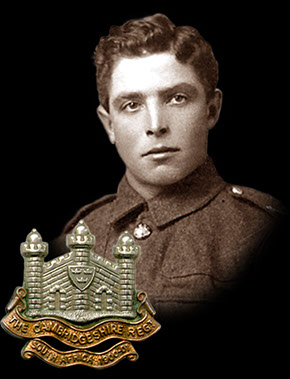
The legendary CSM Harry Betts MC DCM*.
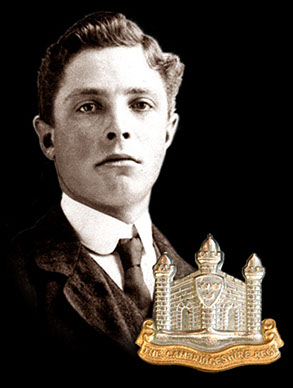
A teenage Harry before the War.
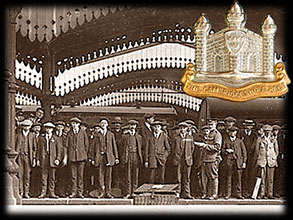
Cambs recruits leaving March station.
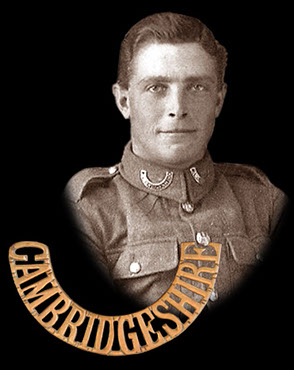
Harry, photographed in 1915.
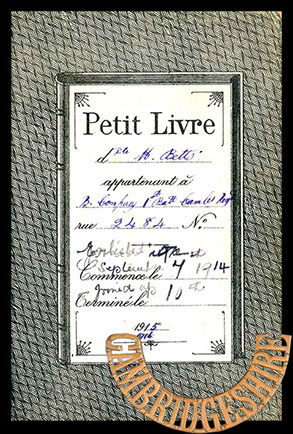
Front cover of Harry's 1914 to 1916 diary.

Inside the front cover of his diary.
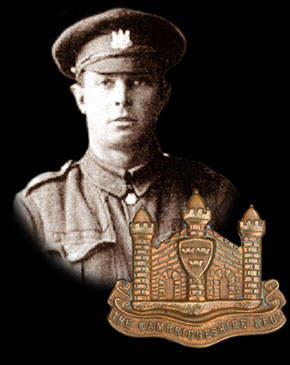
Harry as a Sergeant in 1917.
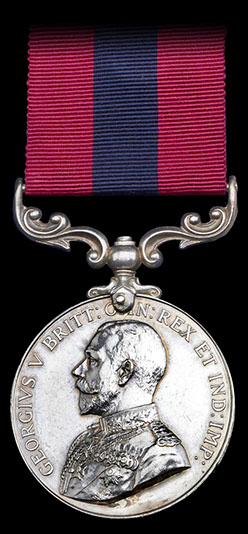
The Distinguished Conduct Medal.
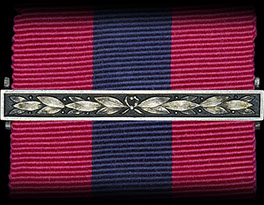
The Bar to the DCM.
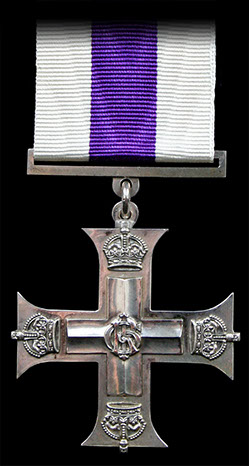
The Military Cross.

Memorial Plaque to Harry Betts.
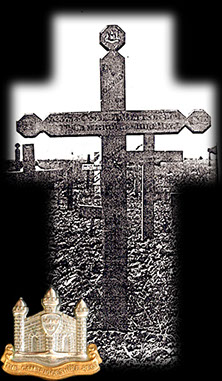
Harry's wooden grave marker made by the Cambs prior to the CWGC stone being laid.

Details on Harry's grave in Beacon Cemetery.
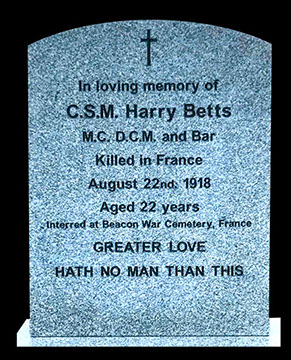
Memorial stone unveiled in August 2018 in Guyhirn churchyard.

This site went live on the 14th February 2015 to mark 100 years since the 1/1st Cambs went off to war.
WE WILL REMEMBER THEM
Email us: cambsregt@gmail.com
Copyright 2015, 2016, 2017, 2018, 2019 by Felix Jackson. The information and images on this site should not be reproduced without prior permission.